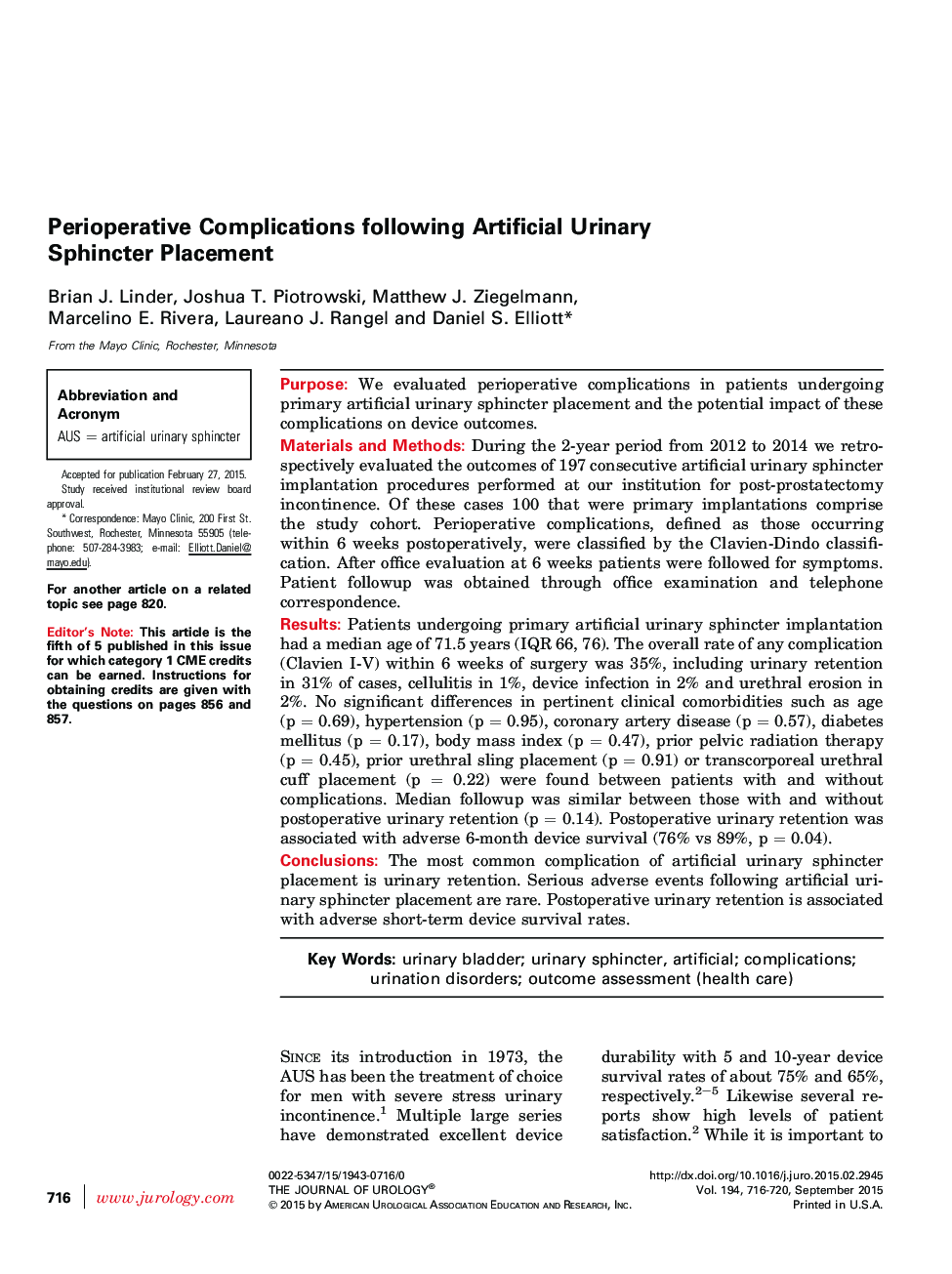| کد مقاله | کد نشریه | سال انتشار | مقاله انگلیسی | نسخه تمام متن |
|---|---|---|---|---|
| 3858125 | 1598886 | 2015 | 5 صفحه PDF | دانلود رایگان |
PurposeWe evaluated perioperative complications in patients undergoing primary artificial urinary sphincter placement and the potential impact of these complications on device outcomes.Materials and MethodsDuring the 2-year period from 2012 to 2014 we retrospectively evaluated the outcomes of 197 consecutive artificial urinary sphincter implantation procedures performed at our institution for post-prostatectomy incontinence. Of these cases 100 that were primary implantations comprise the study cohort. Perioperative complications, defined as those occurring within 6 weeks postoperatively, were classified by the Clavien-Dindo classification. After office evaluation at 6 weeks patients were followed for symptoms. Patient followup was obtained through office examination and telephone correspondence.ResultsPatients undergoing primary artificial urinary sphincter implantation had a median age of 71.5 years (IQR 66, 76). The overall rate of any complication (Clavien I-V) within 6 weeks of surgery was 35%, including urinary retention in 31% of cases, cellulitis in 1%, device infection in 2% and urethral erosion in 2%. No significant differences in pertinent clinical comorbidities such as age (p = 0.69), hypertension (p = 0.95), coronary artery disease (p = 0.57), diabetes mellitus (p = 0.17), body mass index (p = 0.47), prior pelvic radiation therapy (p = 0.45), prior urethral sling placement (p = 0.91) or transcorporeal urethral cuff placement (p = 0.22) were found between patients with and without complications. Median followup was similar between those with and without postoperative urinary retention (p = 0.14). Postoperative urinary retention was associated with adverse 6-month device survival (76% vs 89%, p = 0.04).ConclusionsThe most common complication of artificial urinary sphincter placement is urinary retention. Serious adverse events following artificial urinary sphincter placement are rare. Postoperative urinary retention is associated with adverse short-term device survival rates.
Journal: The Journal of Urology - Volume 194, Issue 3, September 2015, Pages 716–720
